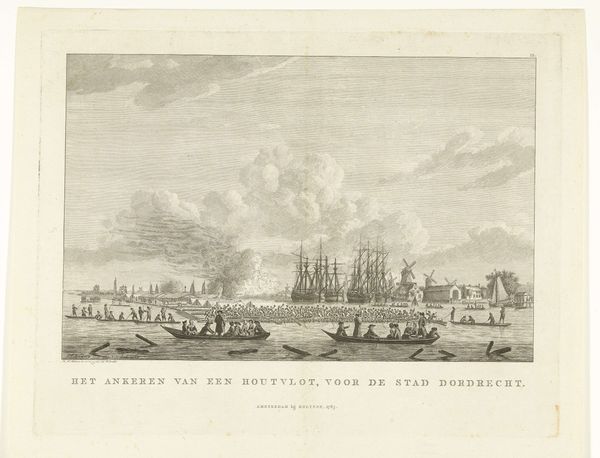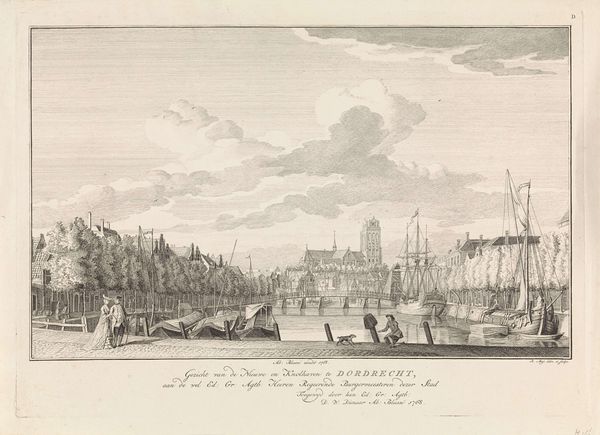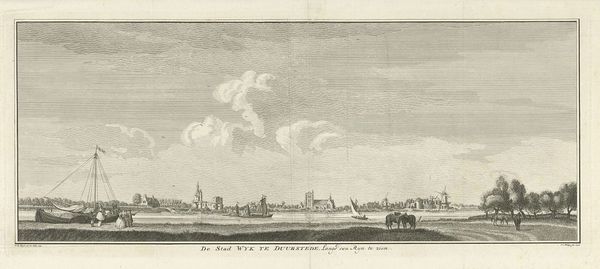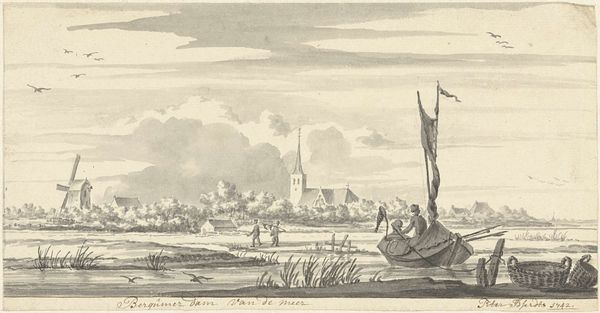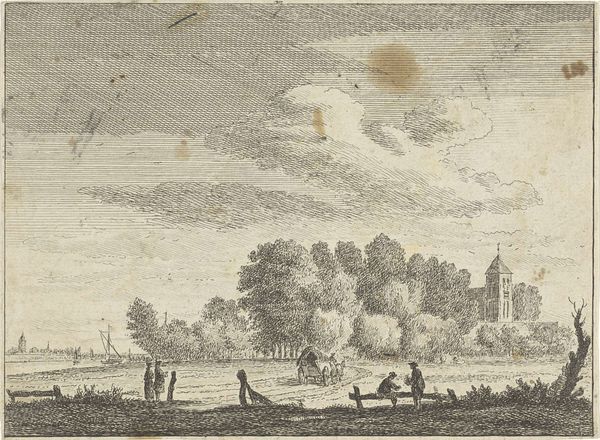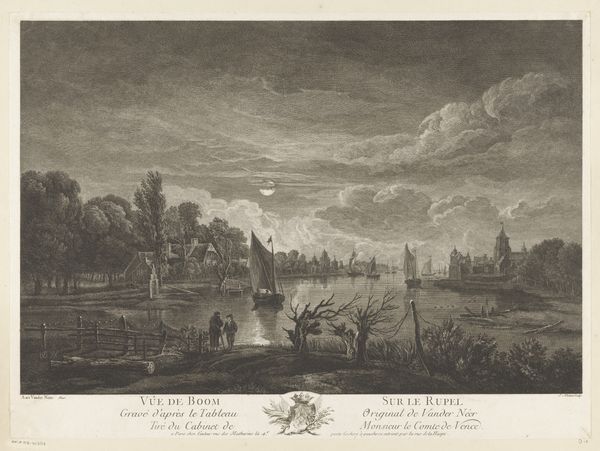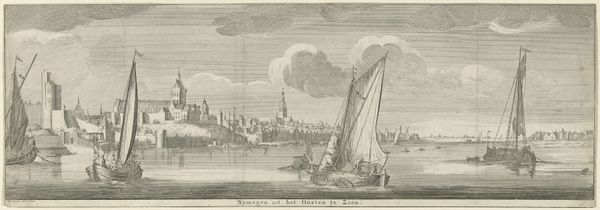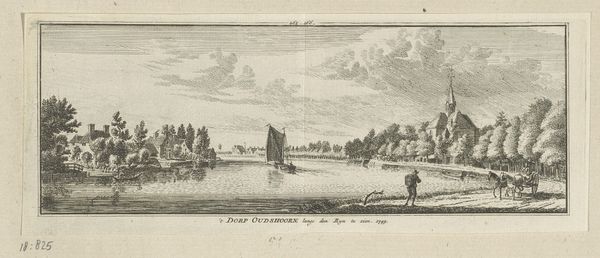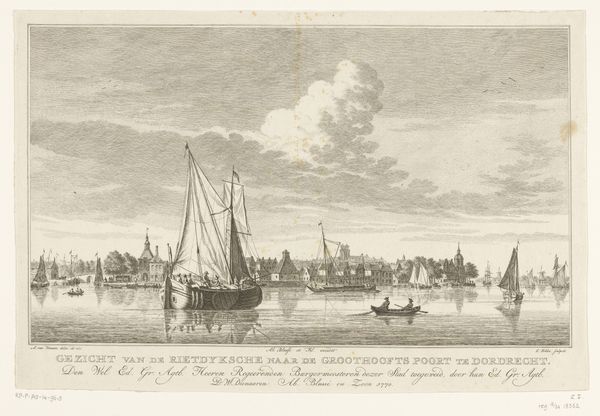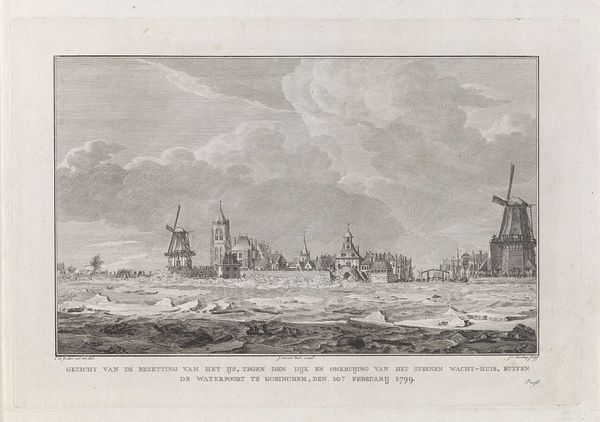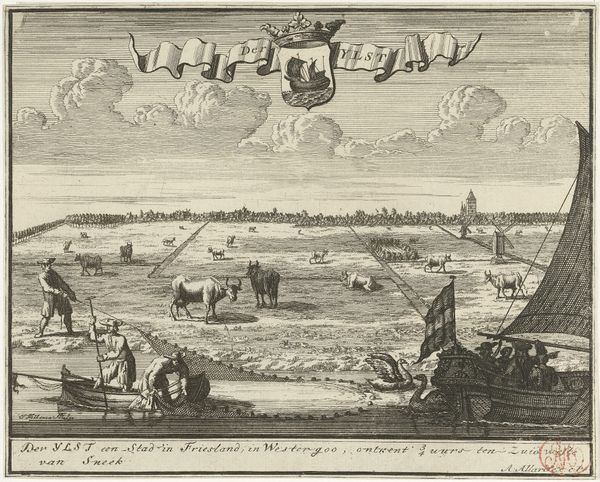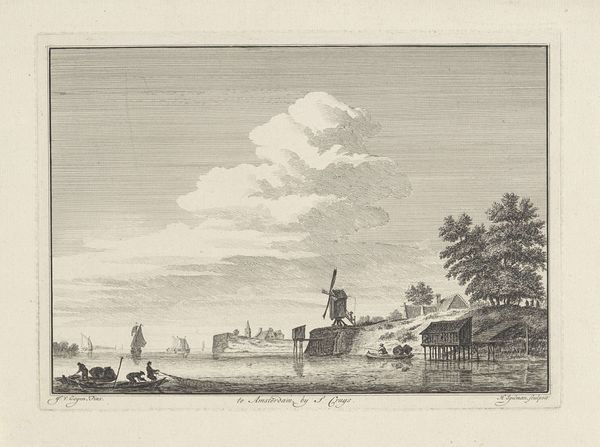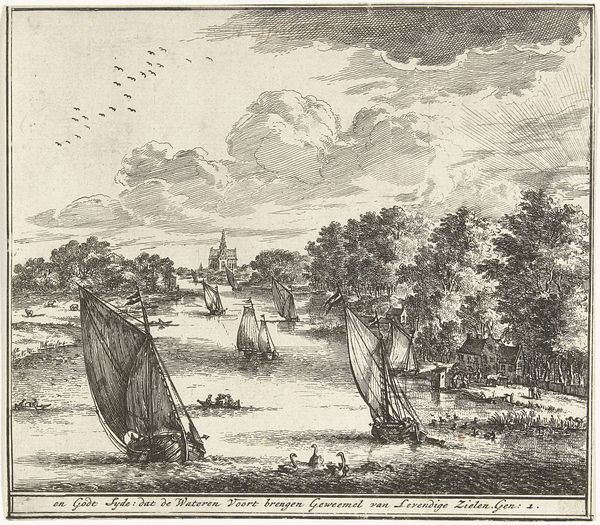
Dimensions: height 248 mm, width 374 mm
Copyright: Rijks Museum: Open Domain
Curator: Looking at "View of Schoonhoven" produced as an engraving in 1762 by Jan Punt, one immediately notices its remarkable detail and classical composure. The work resides at the Rijksmuseum. Editor: Yes, an interesting classical serenity hangs over this print—but I am instantly struck by the floating cherubs; the shields they present feel… official and staged. Like they are framing a particular version of this cityscape. Curator: Precisely. Cityscapes during this era often served as visual testaments to civic pride and commercial prowess. Jan Punt was likely commissioned to produce this view, shaping public perception of Schoonhoven. Editor: This work thus presents more than just a pretty picture. Schoonhoven sits calmly, clean along the waters, almost posing for Punt's and its commissioner's vision. But is this reality, or propaganda? I ask how life unfolds beyond this calm façade for those outside privileged circles. Curator: Well, Punt has situated the city prominently and immaculately. The viewpoint allows viewers a broad sweep of the architecture along the Lek river. Notice the careful articulation of the buildings, boats, and even the slight undulation of the water—it reinforces order, a society working in harmony. Editor: It makes me wonder, too, about the choices made – which areas are highlighted? What kind of human stories have been left out in Punt’s etching process? The people are so small, they almost disappear within the larger architectural landscape. It begs reflection on what kind of “view” this artwork truly is presenting. Curator: Yes, but it is a testament to how 18th century engravings such as these aimed to deliver accessible visions to a burgeoning public sphere—albeit, one often shaped by particular socio-political interests. Editor: Ultimately, I am left considering that such "views" served not merely as reflections of cities, but acted as cultural framings, deliberately constructing perceptions of place, power, and social standing. They invite our critical exploration. Curator: And I am fascinated by how images of everyday life became imbued with political intent through such meticulous craftsmanship and strategic distribution in the 18th century.
Comments
No comments
Be the first to comment and join the conversation on the ultimate creative platform.

